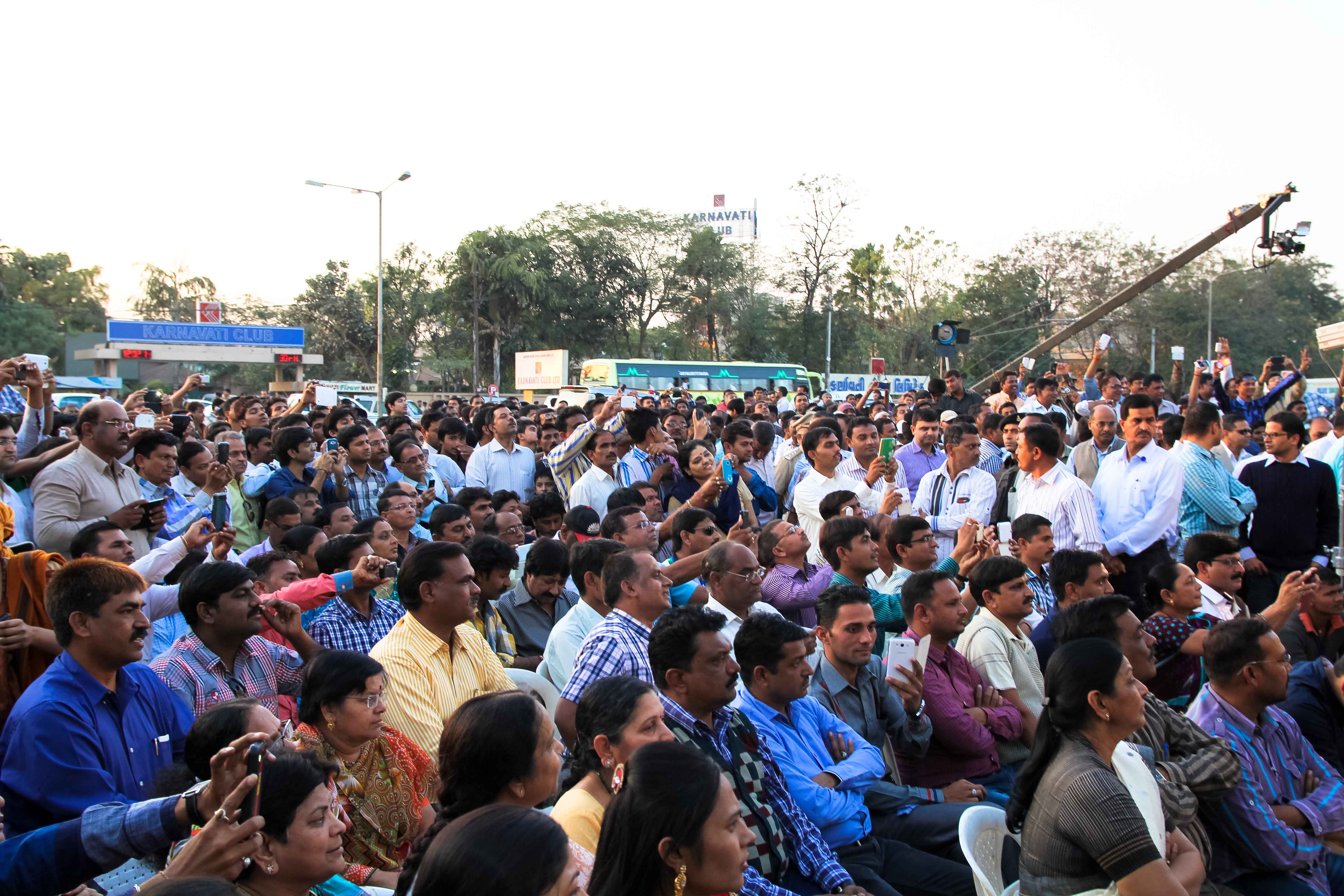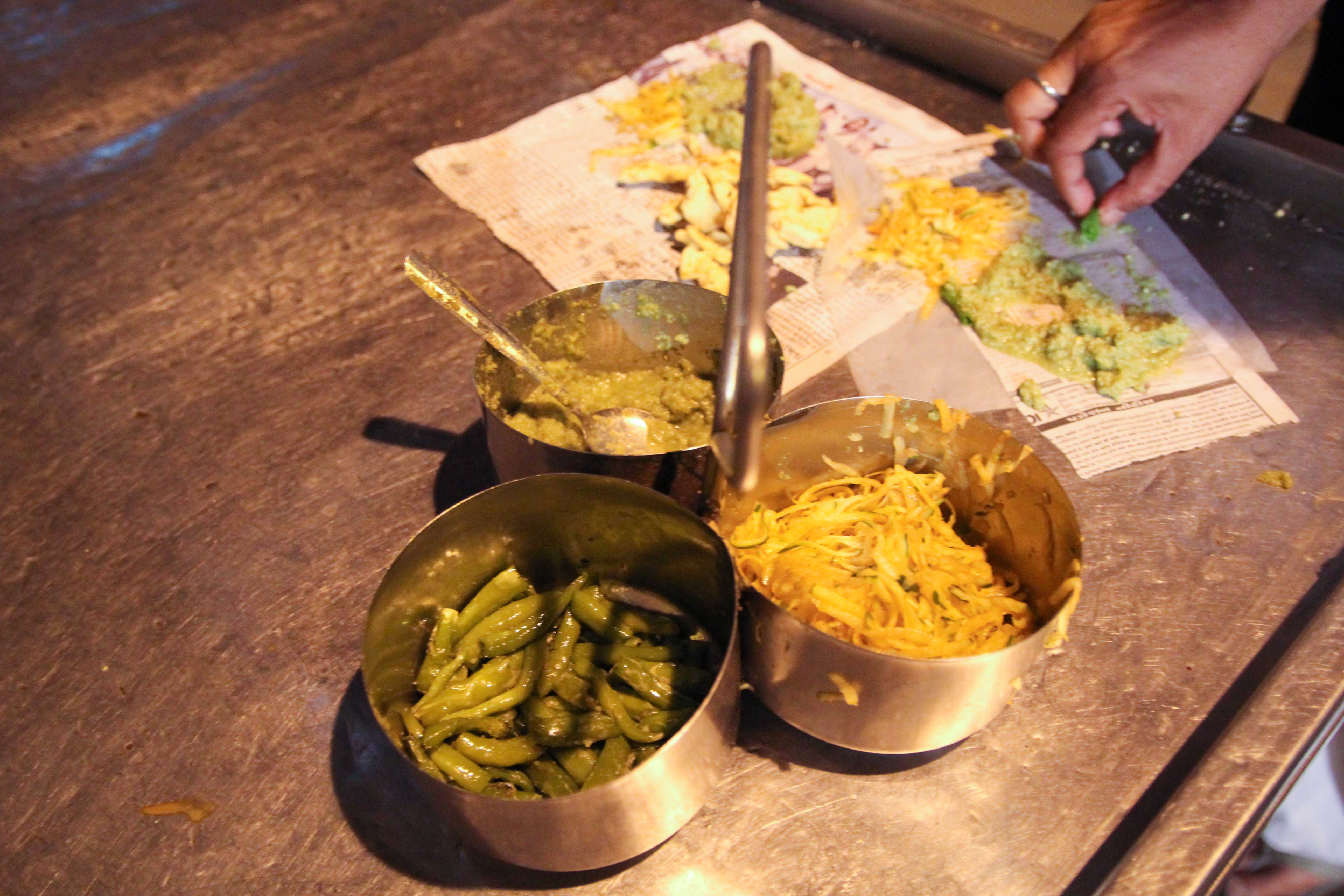Thanks to Indian opposition leader Narendra Modi’s campaign to become prime minister, chai wallahs across the country are in the spotlight perhaps more than ever. Modi’s Bharatiya Janata Party (BJP) has been making much of the time he spent working as a boy at his father’s tea stall at the Vadnagar railway station before rising to the post of Chief Minister of Gujarat.

Indian opposition leader Narendra Modi had a brief stint as a chai wallah at his father’s tea stall before becoming Chief Minister of Gujarat.
In October, the BJP began a campaign in which chai wallahs branded their businesses as NaMo Tea Stalls, distributing promotional materials and money for chai wallahs to improve their stalls in exchange for their public endorsement. (Modi is often referred to as NaMo, the Hindi abbreviation for his name.) After an errant comment by Mani Shankar Aiyar, a prominent politician from the ruling Congress party, that Modi would be welcome to serve him chai but could never become prime minister, the BJP has brewed up a new storm of chai-related campaigning.
Yesterday marked the launch of Chai Pe Charcha, a series of events in which Modi will visit chai stands and answer questions from audiences gathered at tea stalls around the country via webcast. It seems to be a wise campaign tactic. Chai Pe Charcha, which means “discussion over tea” in Hindi, not only allows Modi to remind voters of his humble roots as a chai wallah; it enables him to connect with voters in a place where politics is most often discussed – the tea stall. Indeed, many say the communist movements of Kerala and West Bengal began in tea shops, and when Indian political commentators want to gauge public opinion, they are more likely to head to a local chai stand than consult poll figures. Tea stalls are particularly important in Gujarat, a “dry state” since its inception in 1960 in honor of its native son Mahatma Gandhi. With no bars to go to, most Ahmedabadis head to tea stalls to socialize until the wee hours of the morning – or until cops shut down the party – over cups of milky chai, cigarettes and Gujarati snacks like gathiya, deep fried strips of spiced gram flour dough served with zesty chili-mint chutney and tangy raw papaya slaw.
In a city with hundreds of iconic kitlis – literally ‘kettle’ in Gujarati, as tea shops are known here – local BJP workers were spoilt for choice of where to launch the Chai Pe Charcha. They chose one of our favorites, Iscon Ganthiya on S.G. Highway, which we had visited the night before to meet its owner, Mandeep Patel. Mandeep, 28, arrived in Ahmedabad seven years ago from Upleta, a small town about 320 km southwest of here, with ambition, work ethic and not much else. He had worked as a farmer for five years after completing 10th grade and heard there was money to be made in Gujarat’s largest city, which has seen significant economic development in the past decade. He taught himself to make gathiya and set up a roadside stand in Ahmedabad’s upscale Satellite area; after a year he began serving chai as well. “In the beginning I had to struggle,” Mandeep said as customers swirled about his store on Tuesday around midnight. “For two years, it was just me and a cart. It was hard in the rain and in the winter. But slowly my name got out. I went from one customer to ten customers, then ten to twenty, then twenty to 100. I earned enough to be stable, and then saved enough to rent this space,” he said, pointing to the large storefront, which has three main preparation stations – gathiya, chai and maskabun, fluffy buns slathered with creamy butter and other toppings from chili-garlic chutney and peanuts to Nutella and cheese.

Iscon Ganthiya is a popular kitli, or tea stall, in Ahmedabad, Gujarat, where locals gather all hours of the night.
It was in front of the chai station that Modi sat for three hours yesterday answering questions as citizens tuned in from reportedly 1,000 tea stalls across 300 cities. He kicked off the event by recalling his brief stint as a chai wallah. “I learned a lot when I was selling tea. I got an opportunity to interact with a lot of people. I used to listen to the people while they were discussing issues. It was a special experience,” Modi said, taking a sip of Iscon Ganthiya’s trademark rich cardamom chai. “In our country, a tea stall serves as a means of livelihood for the poorest of the poor. In a way, a tea stall serves as a footpath Parliament. While sipping a cup of tea, we always discuss a variety of issues, whether they are local, regional, national or international.”

Narendra Modi discussed a range of policy issues with citizens gathered at tea stalls across India during the first Chai Pe Charcha on Feb. 12, 2014.
Over the course of the discussion, Modi touched on topics from recovering “black money” deposited by Indians in foreign bank accounts to combating terrorism to improving transportation infrastructure. But Mandeep seemed too starstruck – or perhaps exhausted from being ordered by the BJP advance team – to have noticed the finer policy points of Modi’s speech. “Ek dum fine,” Mandeep responded when we asked him his thoughts on the event. Completely fine.

Iscon Ganthiya owner Mandeep Patel presented Narendra Modi with a garland of flowers in addition to cups of tea at the Chai Pe Charcha in Ahmedabad, Gujarat on Feb. 12, 2014.
Why did Modi choose Iscon Ganthiya as the first stop on his Chai Pe Charcha tour? “It must be destiny,” Mandeep said. Another observer suggested it was likely due to the tea stall’s location across the road from the posh Karnavati Club, of which Modi’s longtime friend Girish Dani is secretary. We prefer to think it was because of the chai. Indeed, Modi did compliment Mandeep on the tea. “Modi Ji drank three glasses of chai and said it was very good. Now everyone in Ahmedabad will know about our chai.” This could help with Mandeep’s expansion plans. He recently opened a second branch in Vastrapur and hopes to have 10 to 12 stores in the next three years. Iscon Ganthiya’s success has enabled Mandeep to hire nine employees from his village, paying each a monthly salary of 10,000-15,000 rupees (about $165-$250). One of those employees is Rajesh Giri Meghnathi, the chai wallah who made the tea served to Modi. “I feel very proud,” Rajesh said, parading a huge smile and asking friends to take his photograph. “This is a happy day.” “The happiest in your life?” we asked. “Probably until my marriage.”




